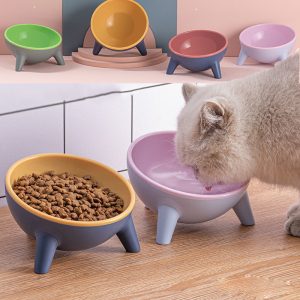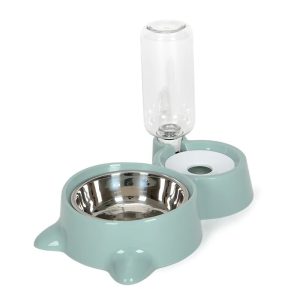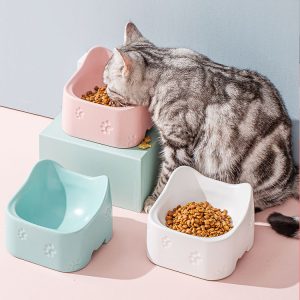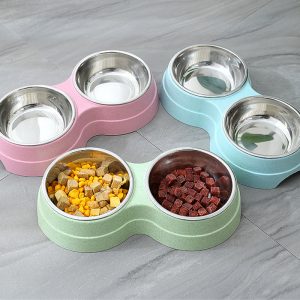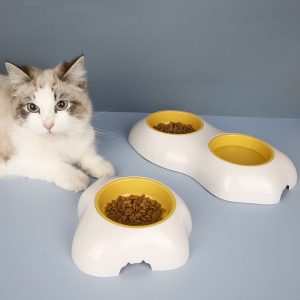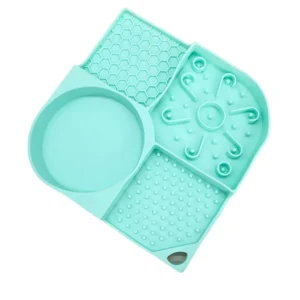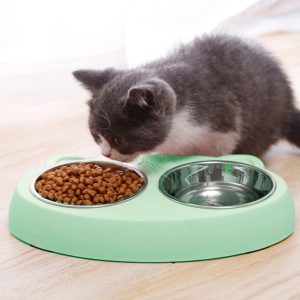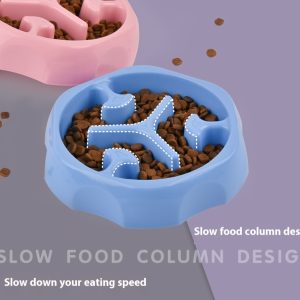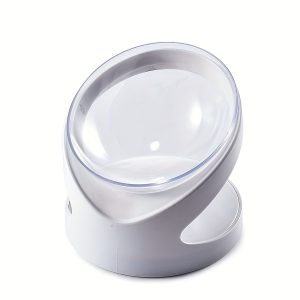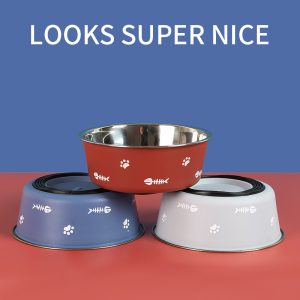Cat Bowls
Showing all 10 results
Bikuu Cat and Dog Bowl with Stand – 15° Tilt...
$18.67FREE 1-3 days delivery & FREE returnsSelect options This product has multiple variants. The options may be chosen on the product pageCat Bowl Fountain Automatic Food and Water Feeder Container, Stainless...
$19.79FREE 1-3 days delivery & FREE returnsSelect options This product has multiple variants. The options may be chosen on the product pageCeramic Pet Bowl for Cats & Dogs, 350ml Water Capacity
Price range: $19.65 through $29.65FREE 1-3 days delivery & FREE returnsSelect options This product has multiple variants. The options may be chosen on the product pageDouble Pet Bowls Cat and Dog Food Water Feeder Stainless...
$17.56FREE 1-3 days delivery & FREE returnsSelect options This product has multiple variants. The options may be chosen on the product pageEgg-shaped Pet Bowl Drinking Water Single Bowl Double Bowl Dog...
Price range: $12.73 through $16.44FREE 1-3 days delivery & FREE returnsSelect options This product has multiple variants. The options may be chosen on the product pageLicky Mats for Dog, Silicone Feeding Mat for Dog Cat,...
$14.82FREE 1-3 days delivery & FREE returnsSelect options This product has multiple variants. The options may be chosen on the product pagePet Double Bowls, Stainless Steel Pet Food Bowl Water Bowl...
$14.56FREE 1-3 days delivery & FREE returnsSelect options This product has multiple variants. The options may be chosen on the product pageRound Shape Slow Feeding Pet Bowl, Anti-Gulping Dog & Cat...
$9.87FREE 1-3 days delivery & FREE returnsSelect options This product has multiple variants. The options may be chosen on the product pageSlanted Stainless Steel Dog Bowl 15°, Pet Food Bowl Tilted...
$23.67FREE 1-3 days delivery & FREE returnsAdd to cartStainless Steel Pet Bowl – Non-Slip, Colorful Design for Cats...
Price range: $14.73 through $16.73FREE 1-3 days delivery & FREE returnsSelect options This product has multiple variants. The options may be chosen on the product page
Stainless Steel, Ceramic, Elevated Bowls
While cat bowls aren’t solely reliant on style to get them, the right feline bowl has so much more to contemplate than just the style. Material and design up to ease of cleaning will influence what your cat eats and how healthy they may be. Selecting the best cat bowl- if it’s your first pet or an upgrade-our guide showcases everything you need to pick the perfect one for your needs.
Cats, like humans, are picky about what they consume. The sort of bowl you present to them can affect their comfort and satisfaction during feeding. A suitable cat bowl helps reduce whisker fatigue, aids digestion, and provides hygiene. In the long run, a good bowl will save you money as it is less likely to degrade faster or become prone to health issues.
Types of Cat Bowls
Different kinds of cat bowls have different functionalities. Here are the most popular ones:
1. Stainless Steel Cat Bowls
These bowls are tough, and resistant to corrosion. They are also very easy to clean. A stainless steel cat bowl is best for cats that fancy simple, solid cat bowls. Stainless steel bowls also come with a rubberized bottom, which keeps them from sliding on a messy eater.
2. Ceramic Cat Bowls
Ceramic bowls have a beauty since they come in various designs and colors. They are heavy enough not to tip over, but they chip easily if mishandled. Be sure to choose lead-free and non-toxic ceramics for your cat’s safety.
3. Plastic Cat Bowls
Plastic bowls are cheaper and come in every shape and color imaginable. The problem is that plastic can hold onto bacteria over time and, of course, this makes the food bad for your cat’s health. One should settle for BPA-free plastic and change it often to ensure hygiene.
4. Elevated Cat Bowls
Elevated cat bowls. Lifting the food will prevent s.rain in the neck, spine, and joints of the kitty. Easy to operate, for old folks or arthritic cats.
5. Automatic Cat Feeder
Automatic feeders are wonderful for busy cat parents. These bowls will dispense food at preset times so that your cat gets fed reliably without your direct input. If you travel regularly or are away for long periods, these will also come in handy well.
What to Consider When Buying a Cat Bowl
There are several things you will want to look at before buying a cat bowl. They are the following:
1. Material
The material also decides the lifespan, cleanliness, and safety of the bowl. Non-porous surfaces are primarily recommended, such as stainless steel and ceramic. It’s easy to clean, which also keeps bacteria from building inside.
2. Size and Depth
Shallower smaller-sized bowls are suitable for kittens and small breeds, while deeper ones are suitable for large breeders. Select the bowl size that you feel is ideal for your cat’s feeding habits so as not to stress out your pet reaching its food.
3. Whisker Sensitivity
Cats have sensitive whiskers; a deep or narrow bowl may be uncomfortable, so causing them whisker fatigue. Use broad, shallow bowls so your cat’s whiskers are less likely to be pressed against the sides of the bowl as they eat.
4. Non-Slip Bottoms
Non-slip bases for cats that will push their bowls around at times. The rubberized or silicone bottom bowls will remain in place for your kitty.
5. Easy to Clean
Make sure that bowls are dishwasher-safe or quite effortless for hand cleaning. The stainless steel and ceramic bowls will prove easier to care for than plastic bowls, which develop scratches and bacterial traps.
How to Keep Cat Bowls Clean
Keeping your cat’s bowl clean is crucial for their health. Follow these tips to ensure hygiene:
- Daily Cleaning: Wash the bowl daily with warm water and mild detergent. Rinse thoroughly to remove any soap residue.
- Disinfect Weekly: Use a pet-safe disinfectant or vinegar solution once a week to deep clean the bowl.
- Replace When Needed: Regularly inspect your cat’s bowl for cracks or scratches. Replace plastic bowls more frequently as they can harbor bacteria.
FAQs about Cat Bowls
How often should I replace my cat’s bowl?
Stainless steel and ceramic bowls can last years if properly maintained. However, plastic bowls should be replaced every 6 months to a year due to the potential for scratches and bacterial build-up.
Are elevated cat bowls necessary?
Elevated bowls are not essential but can be beneficial for older cats or those with joint issues, as they reduce strain on the neck and spine during mealtime.
Can I use a human bowl for my cat?
It’s best to use bowls specifically designed for pets, as they are made from materials that are safer and easier to clean. Human bowls may also lack anti-skid features.
Do stainless steel bowls cause whisker fatigue?
Stainless steel bowls can cause whisker fatigue if they are too deep or narrow. To prevent this, choose a shallow, wide bowl to give your cat’s whiskers enough room.
